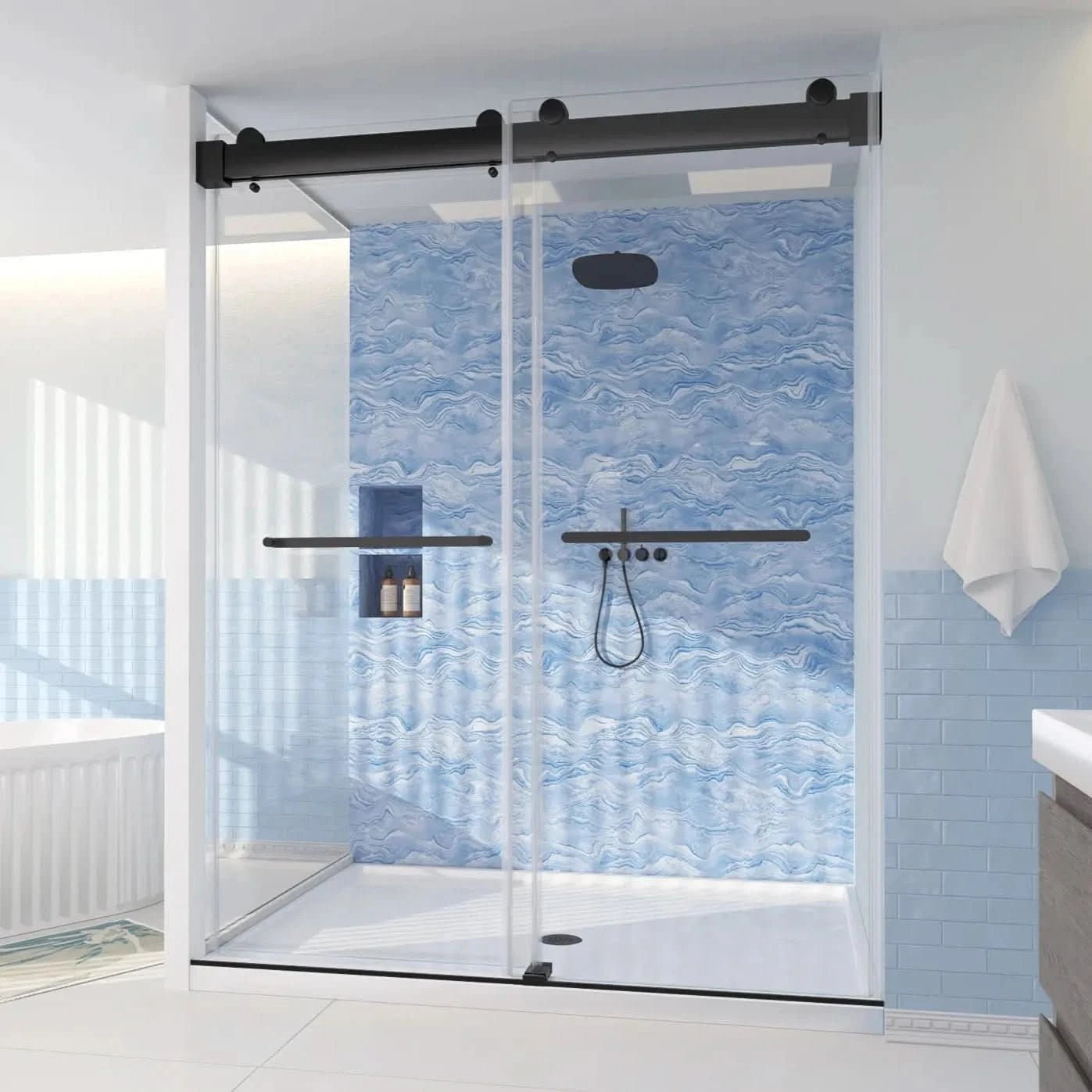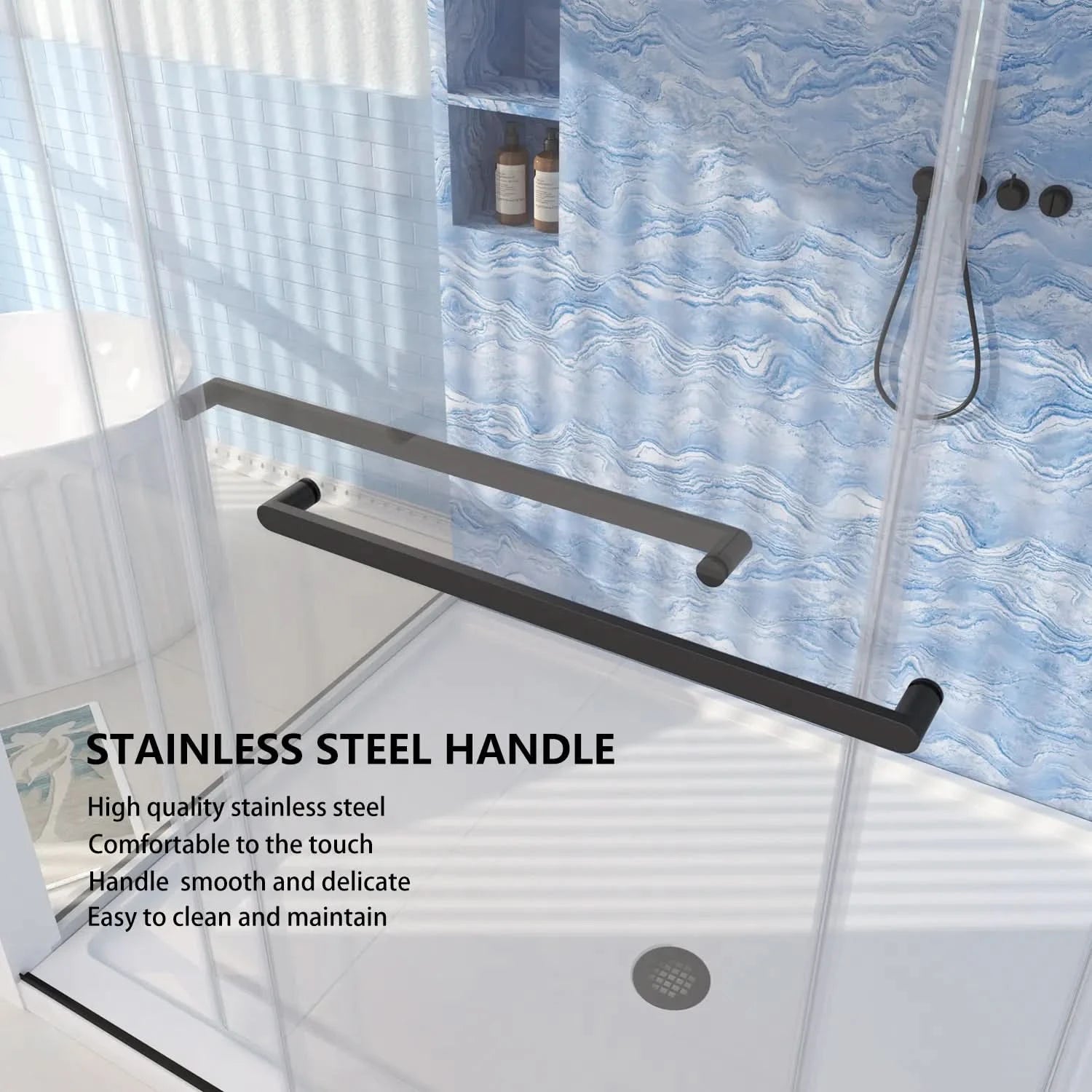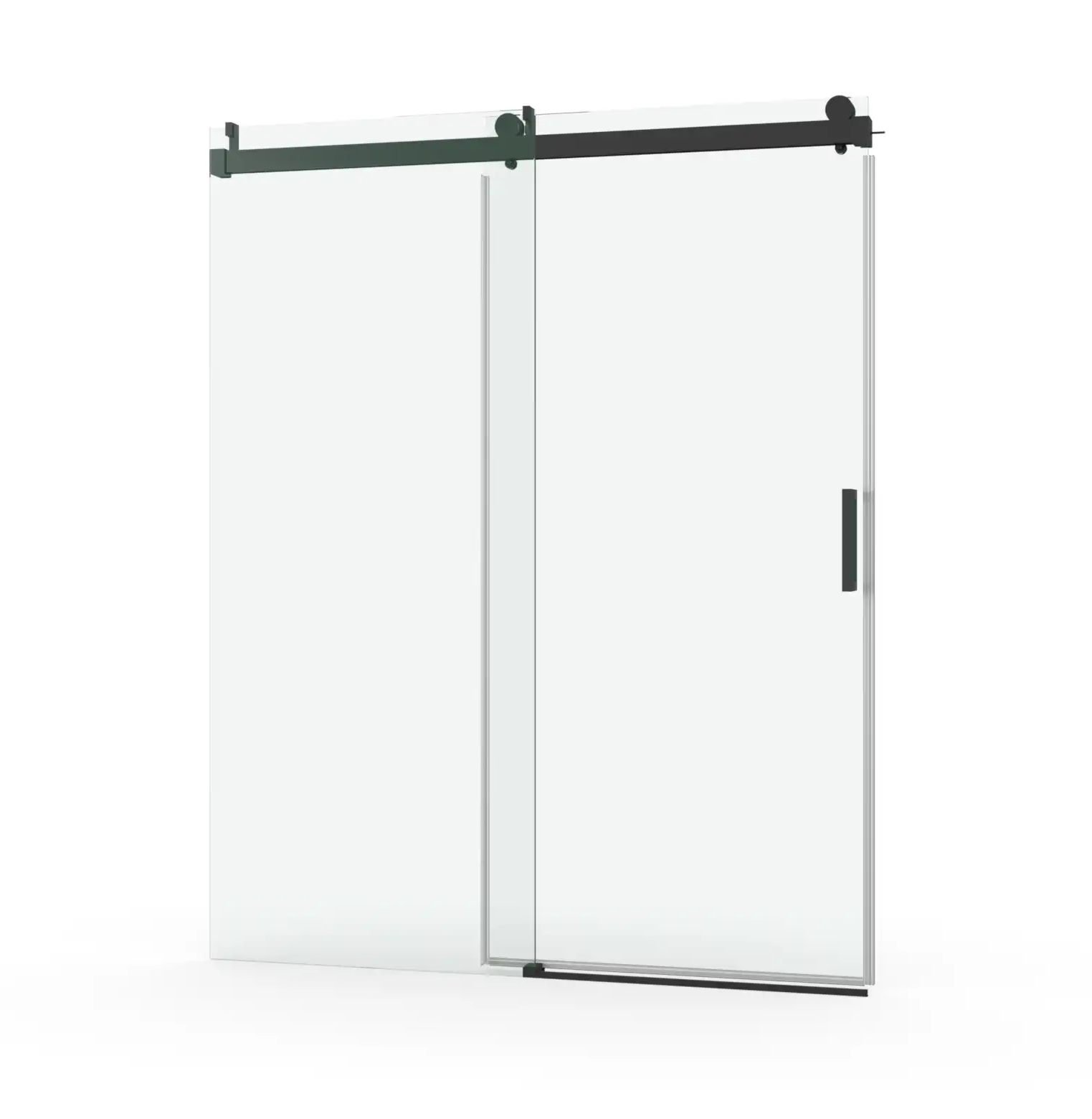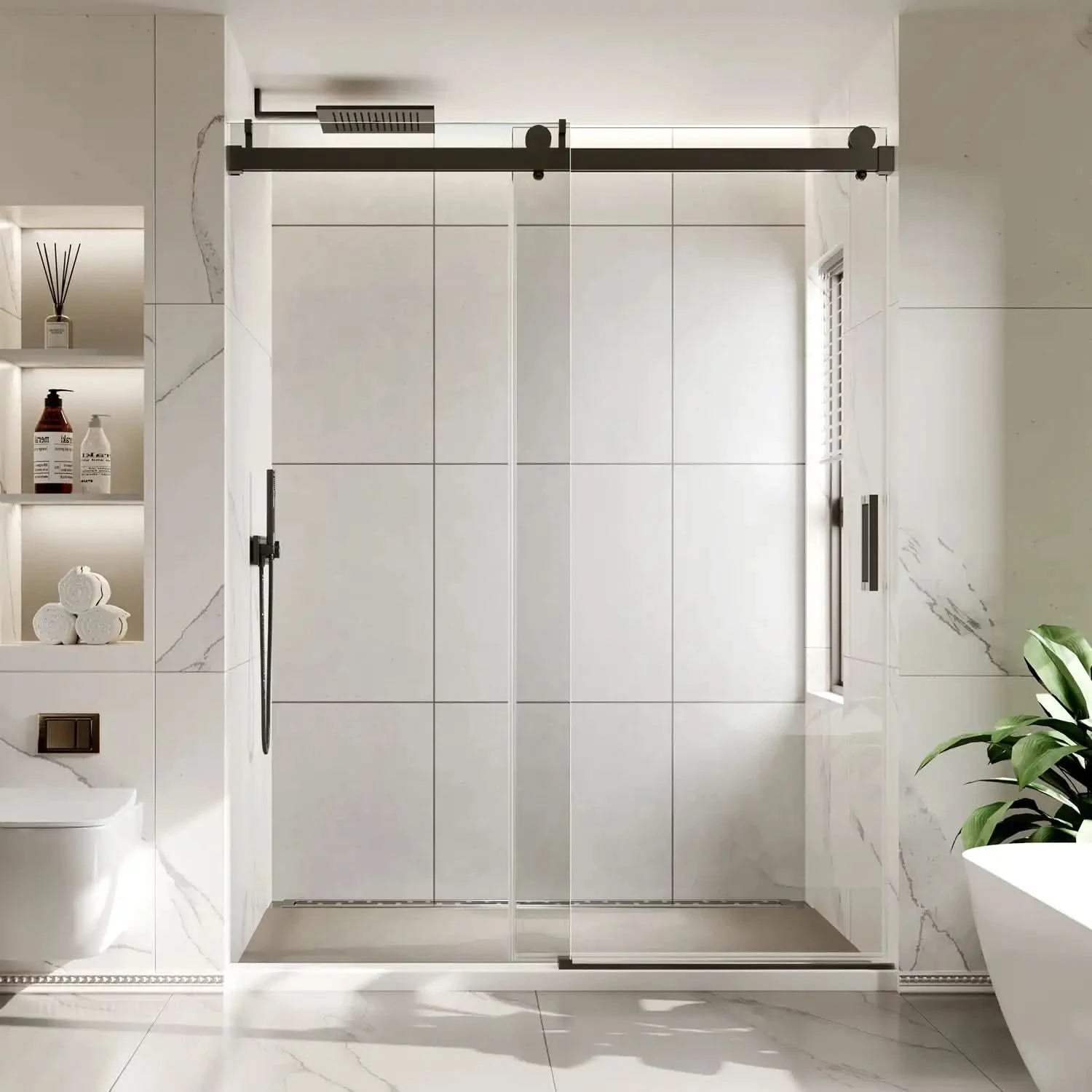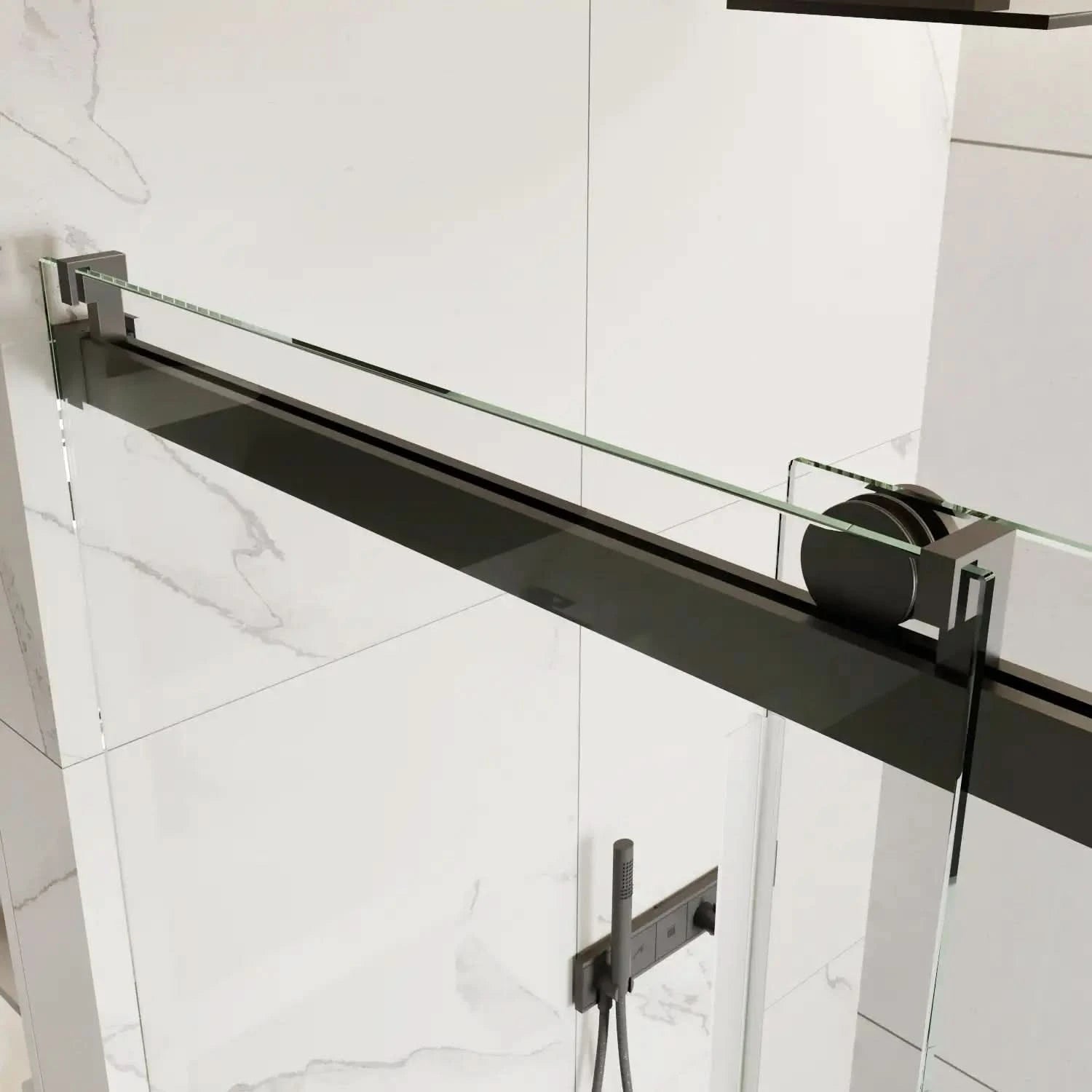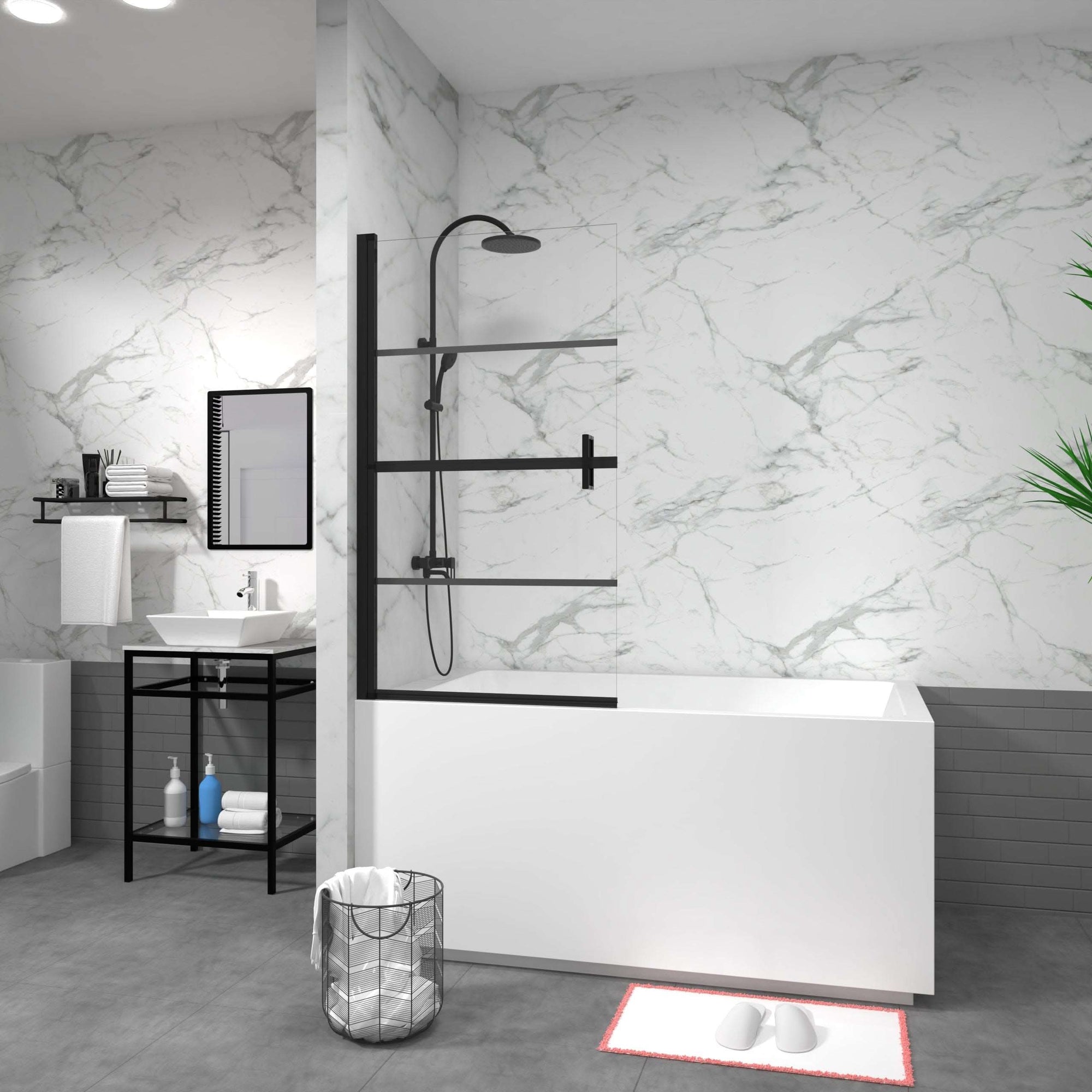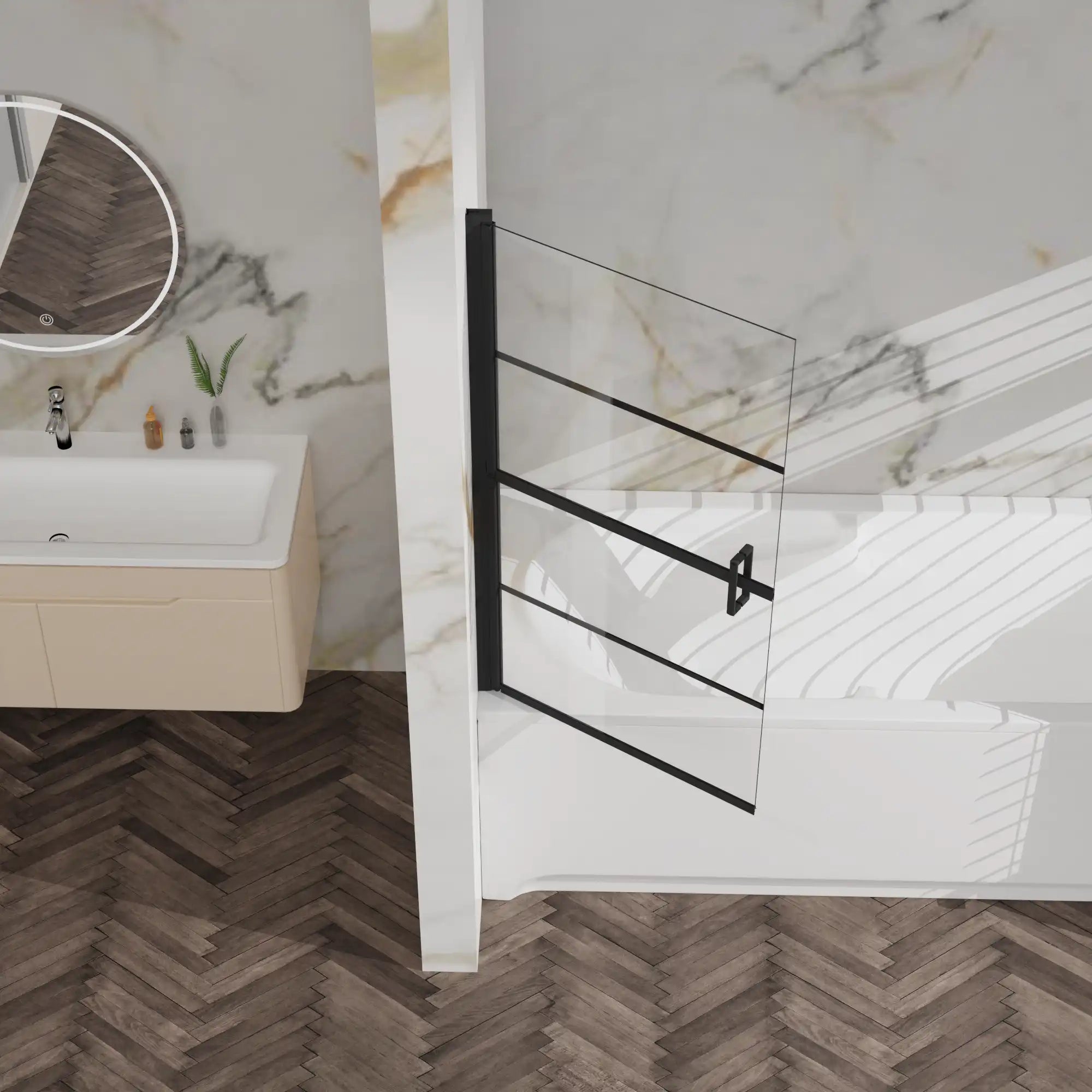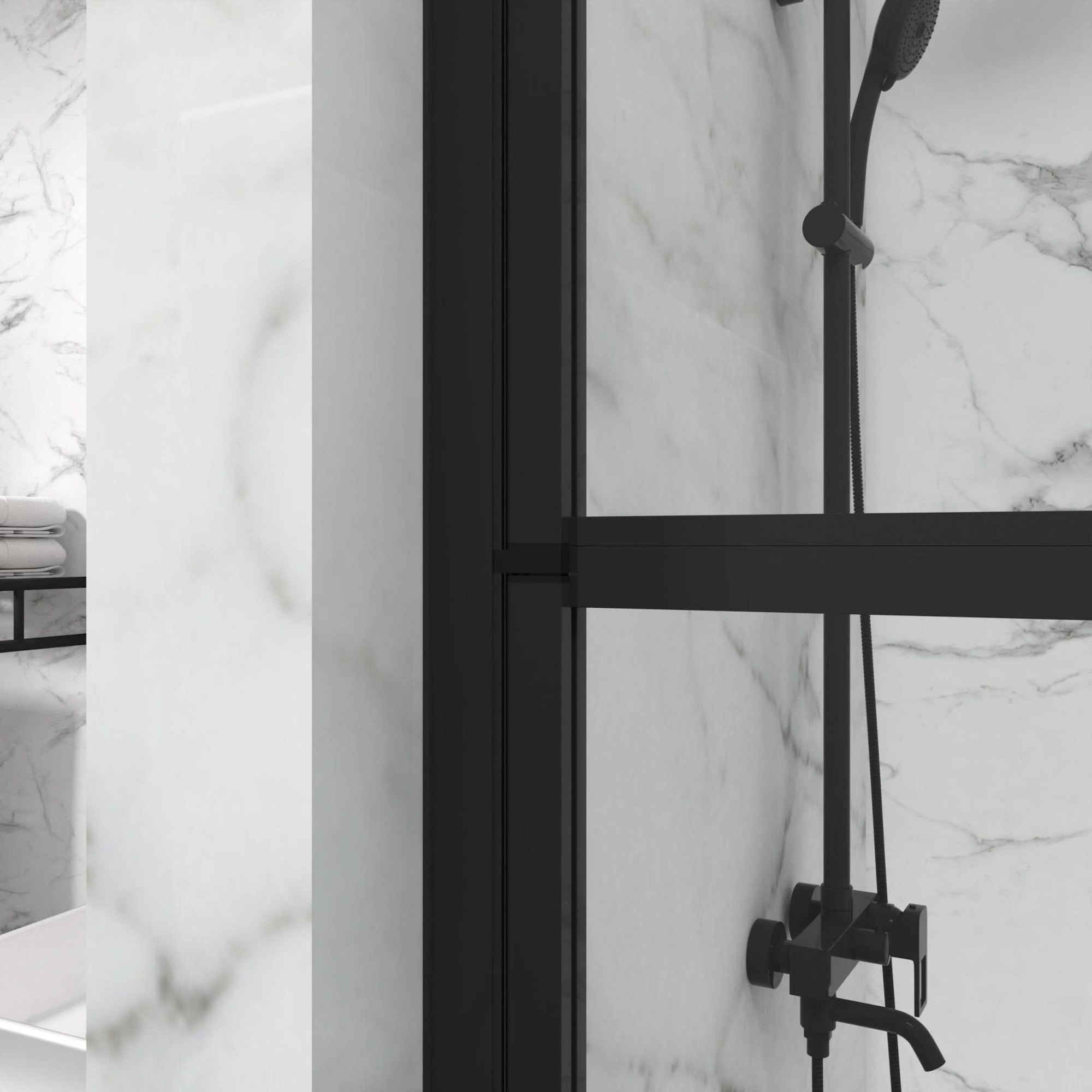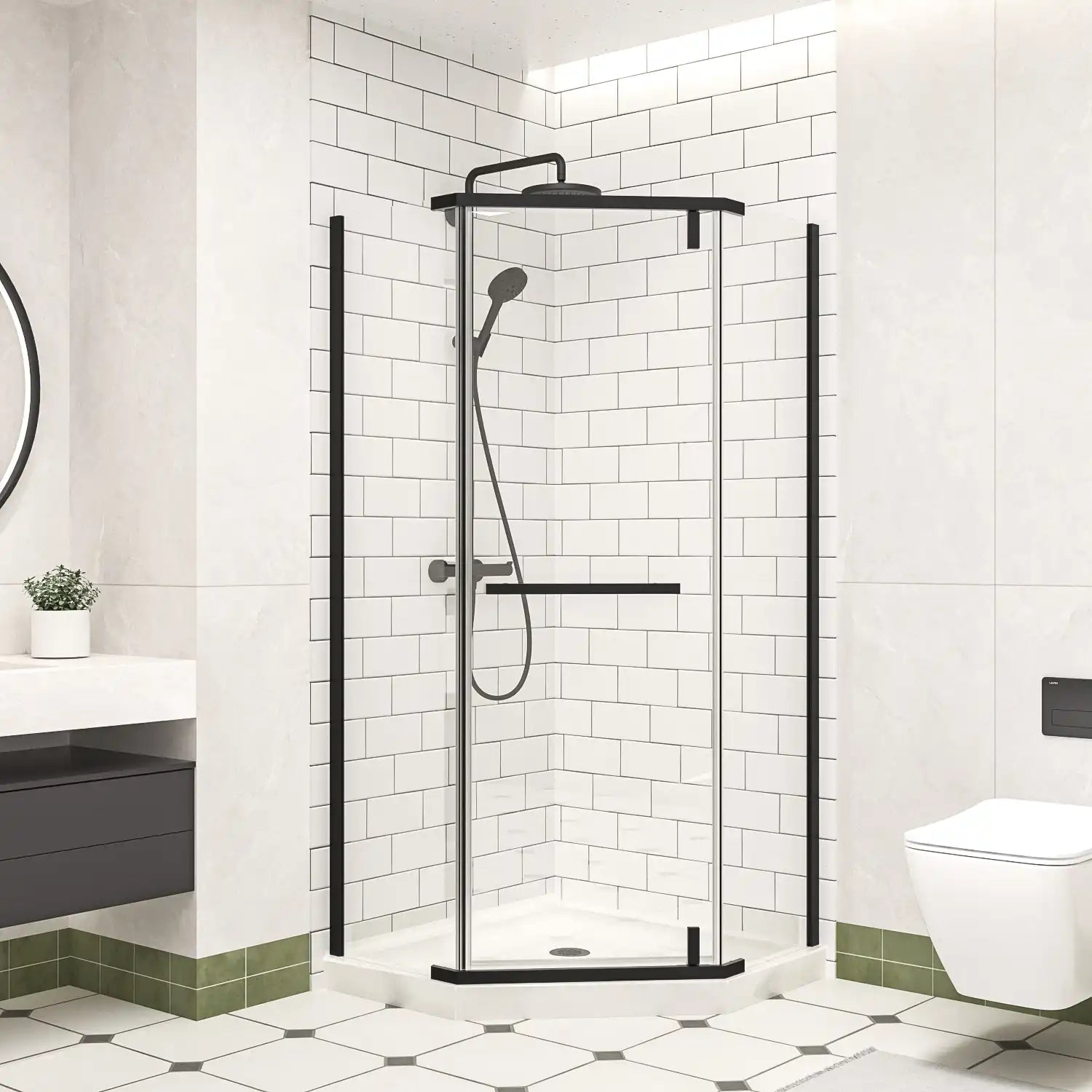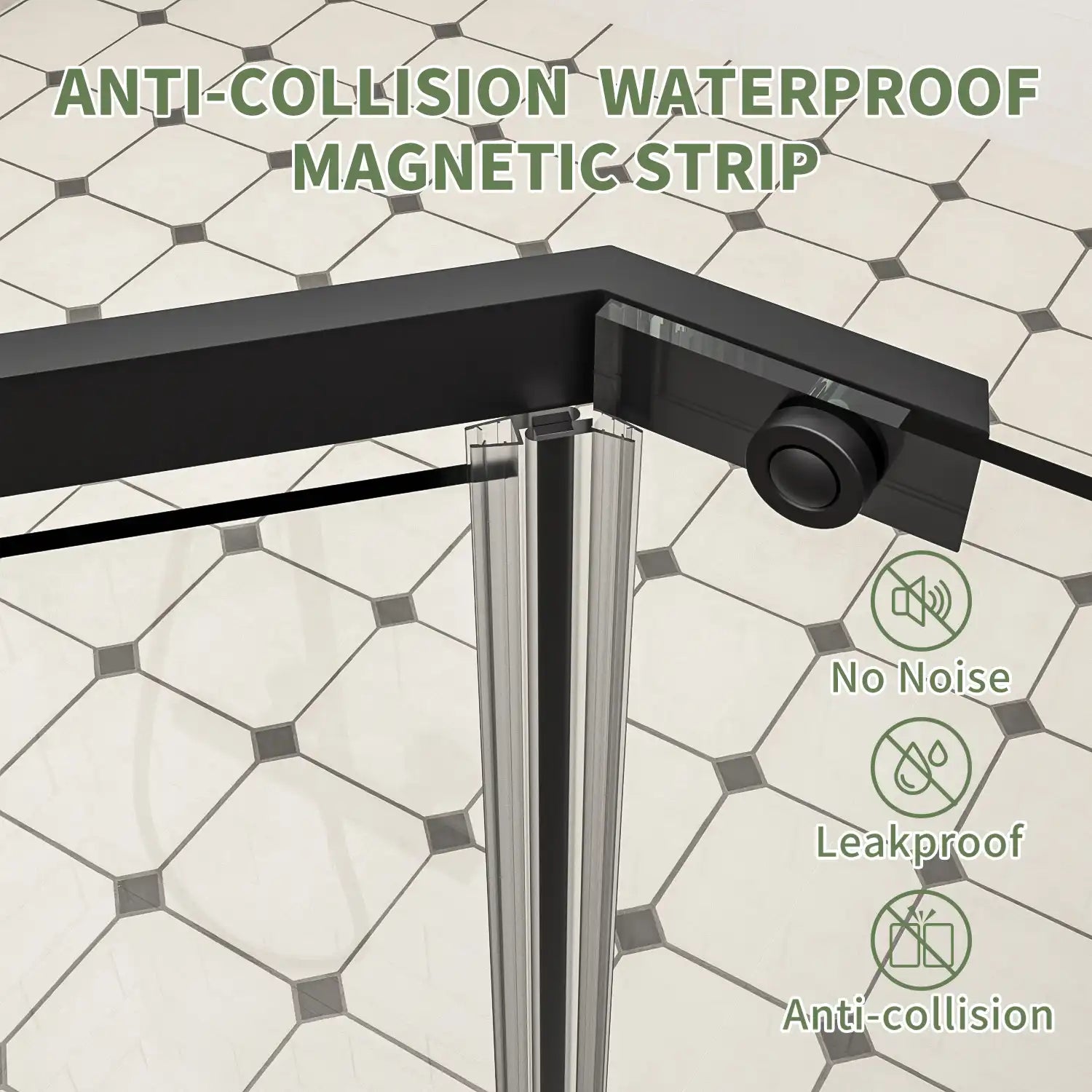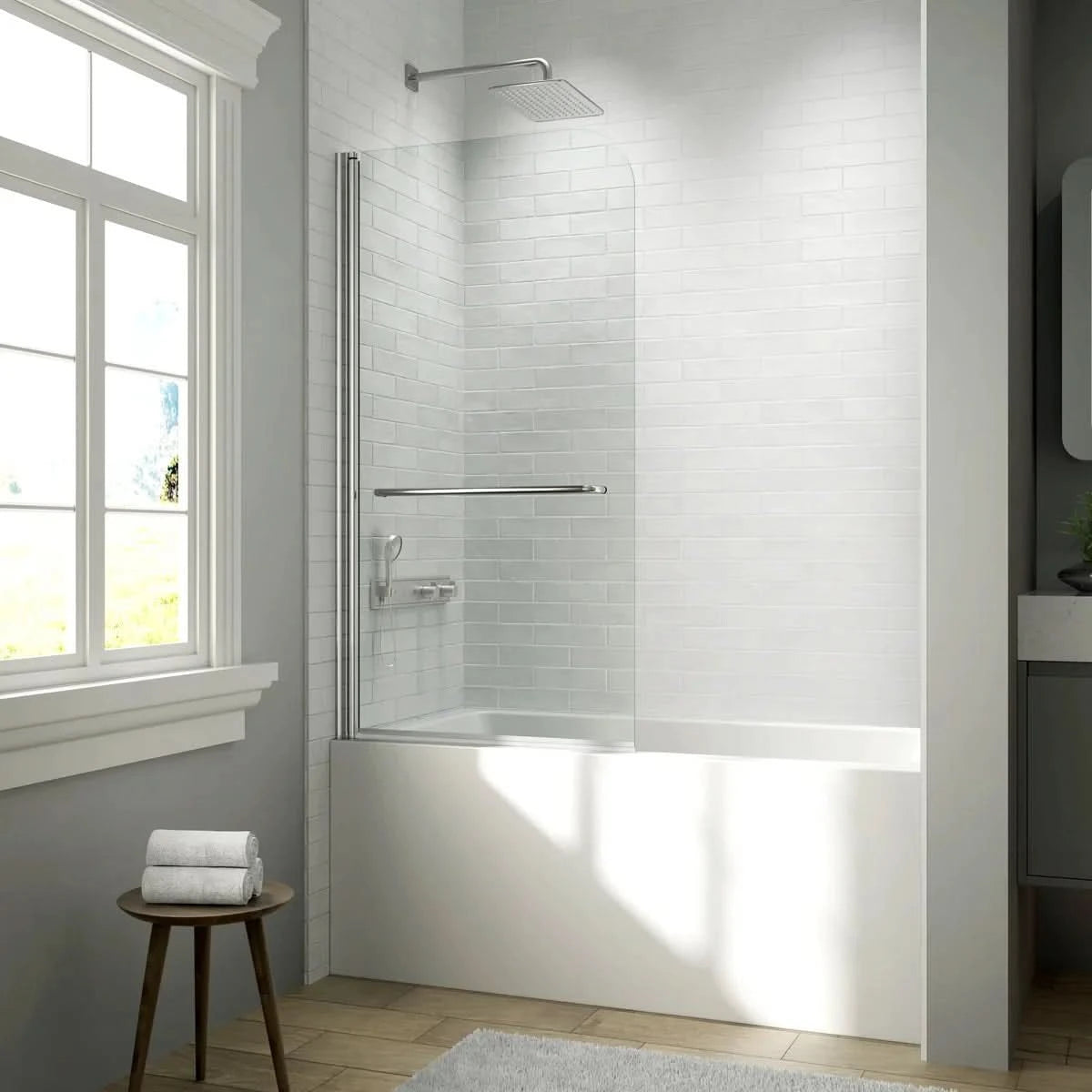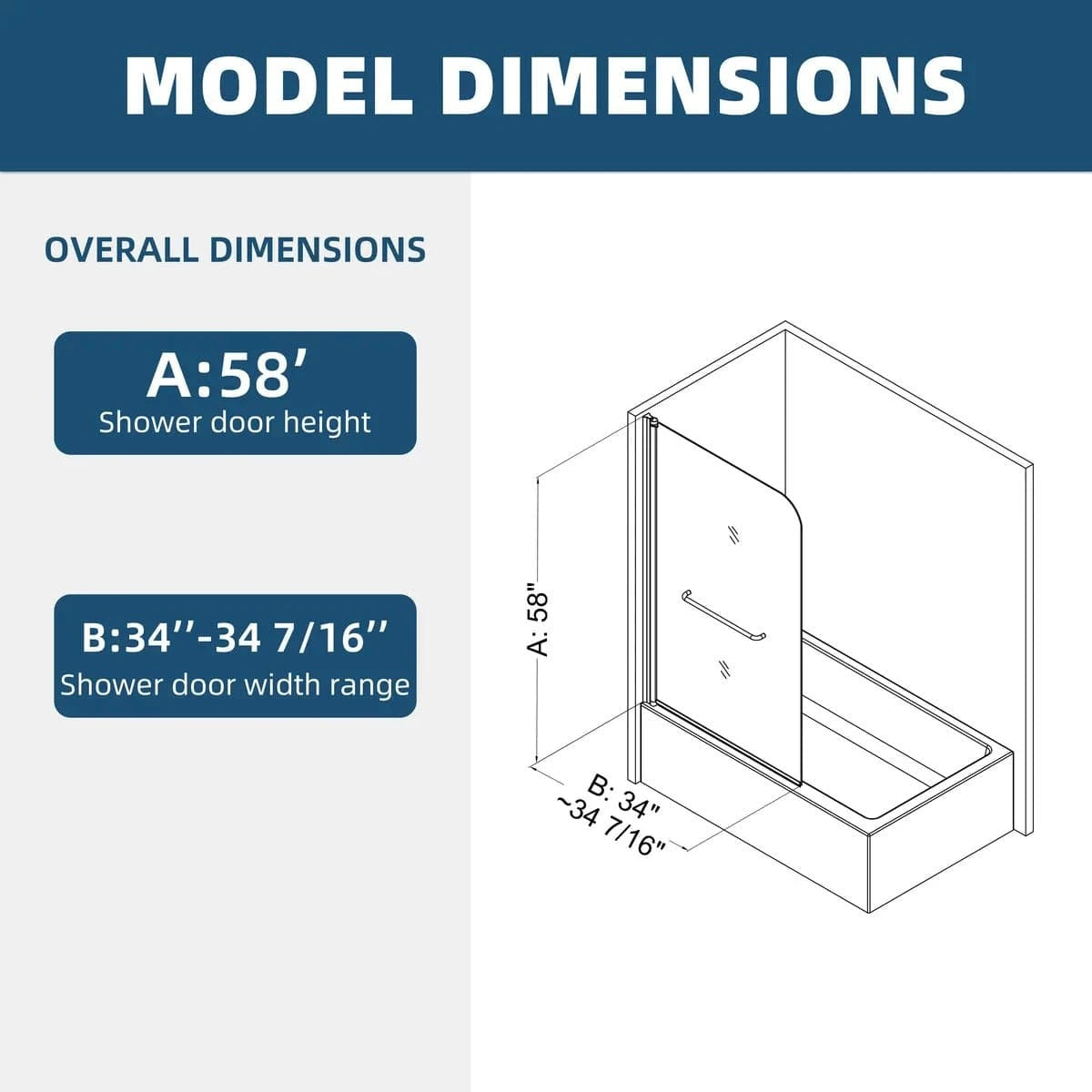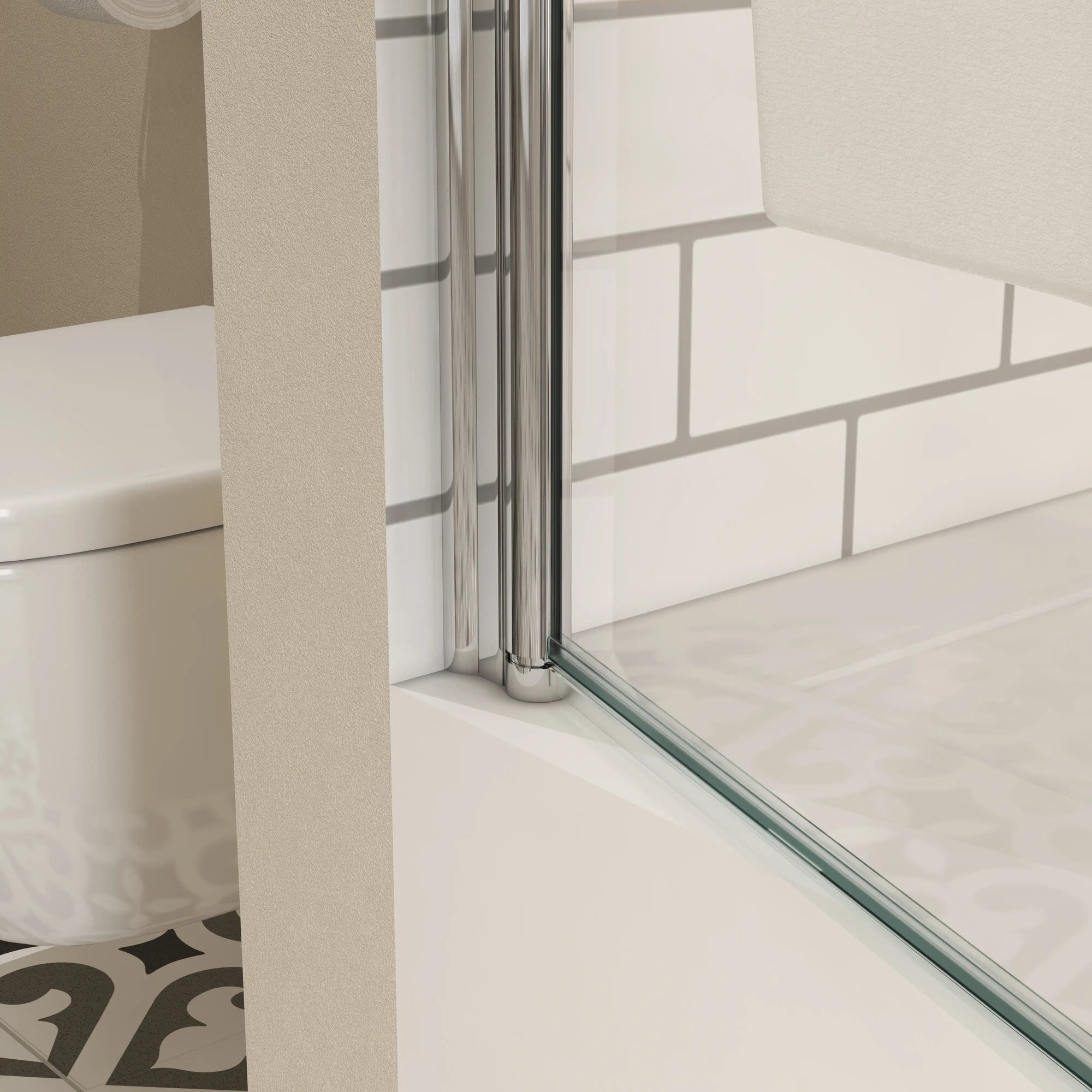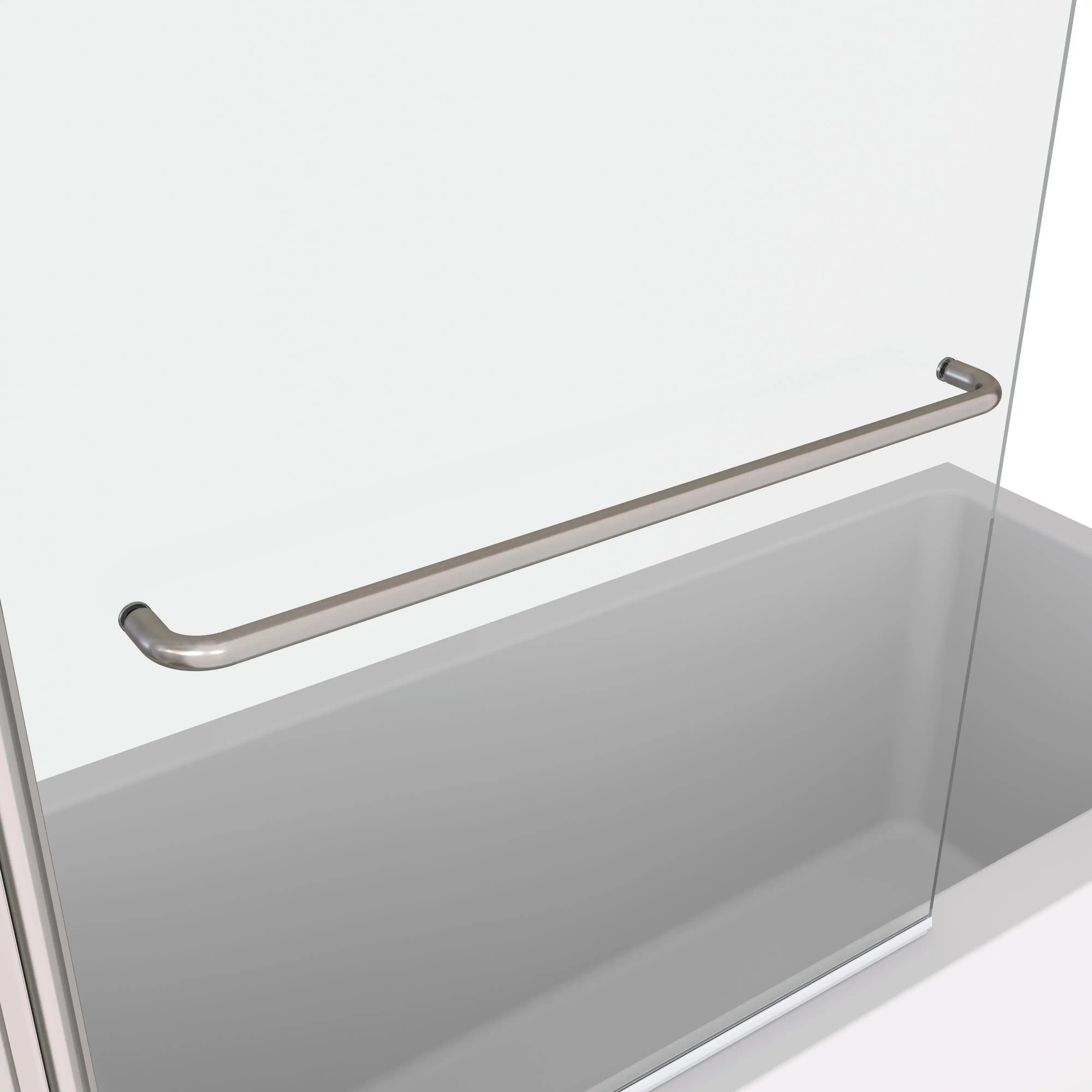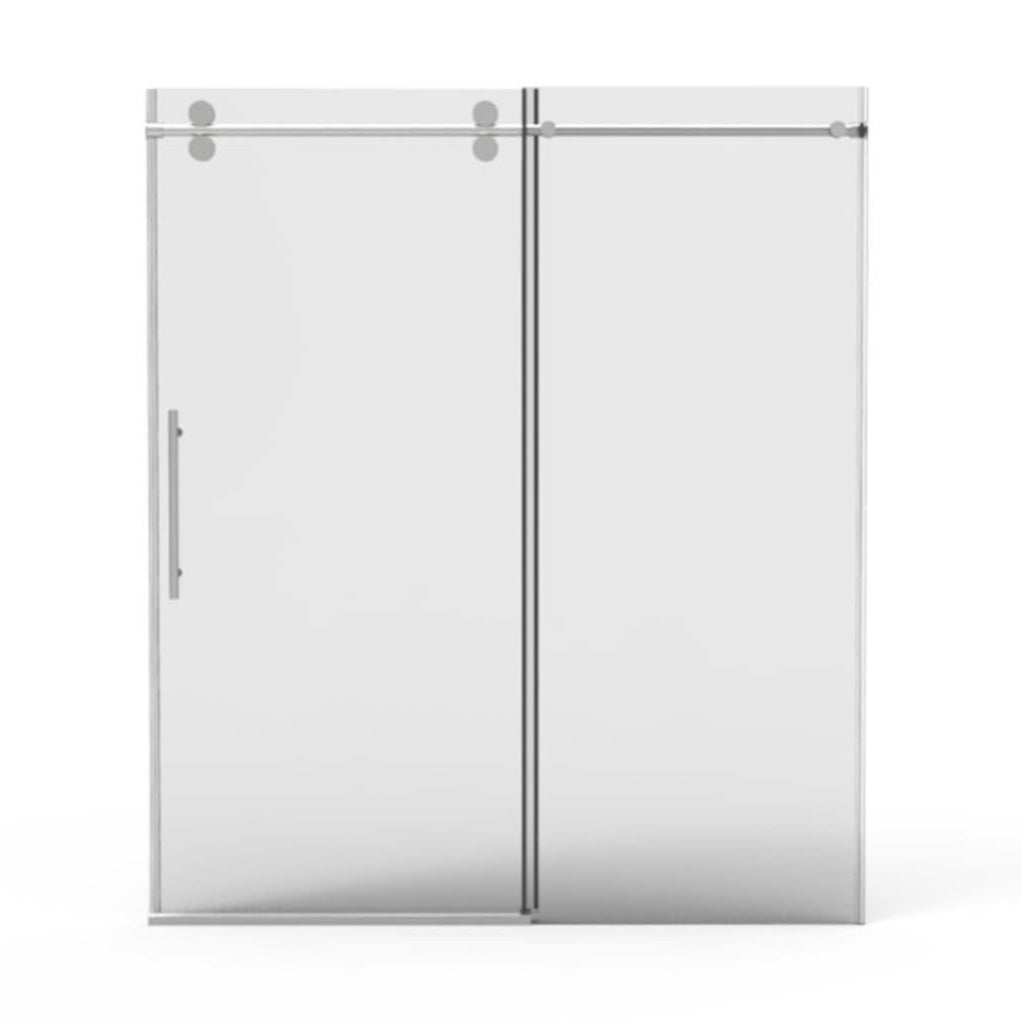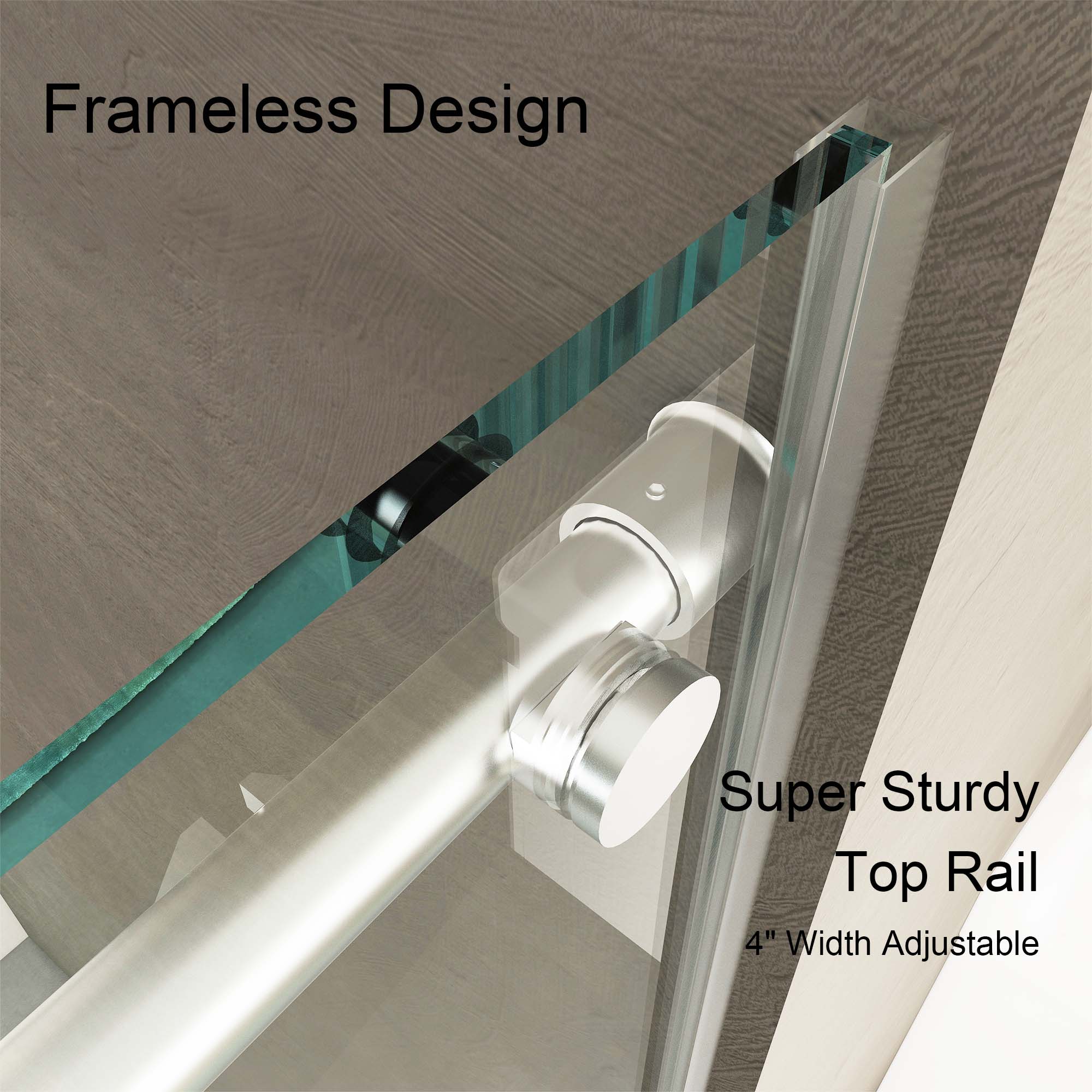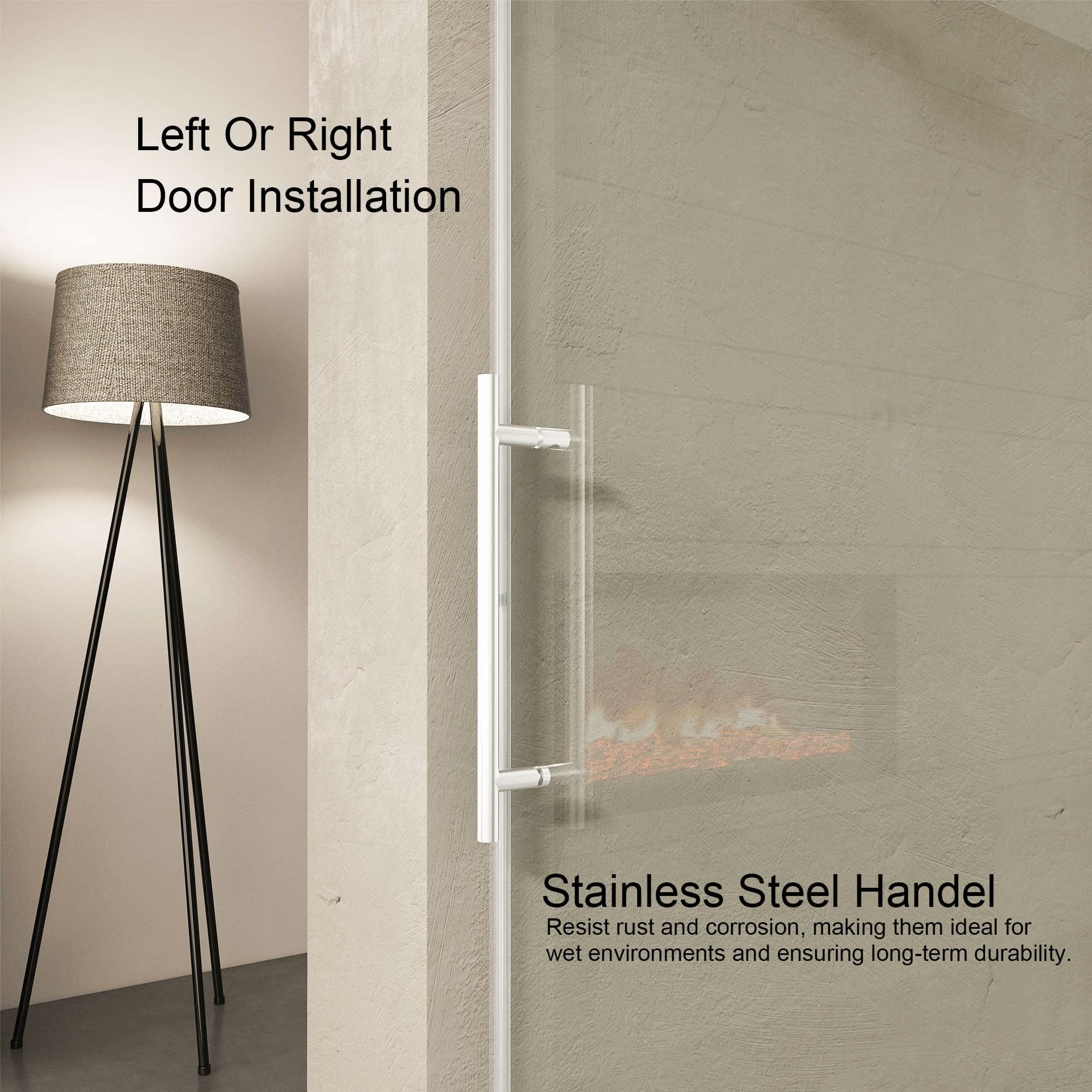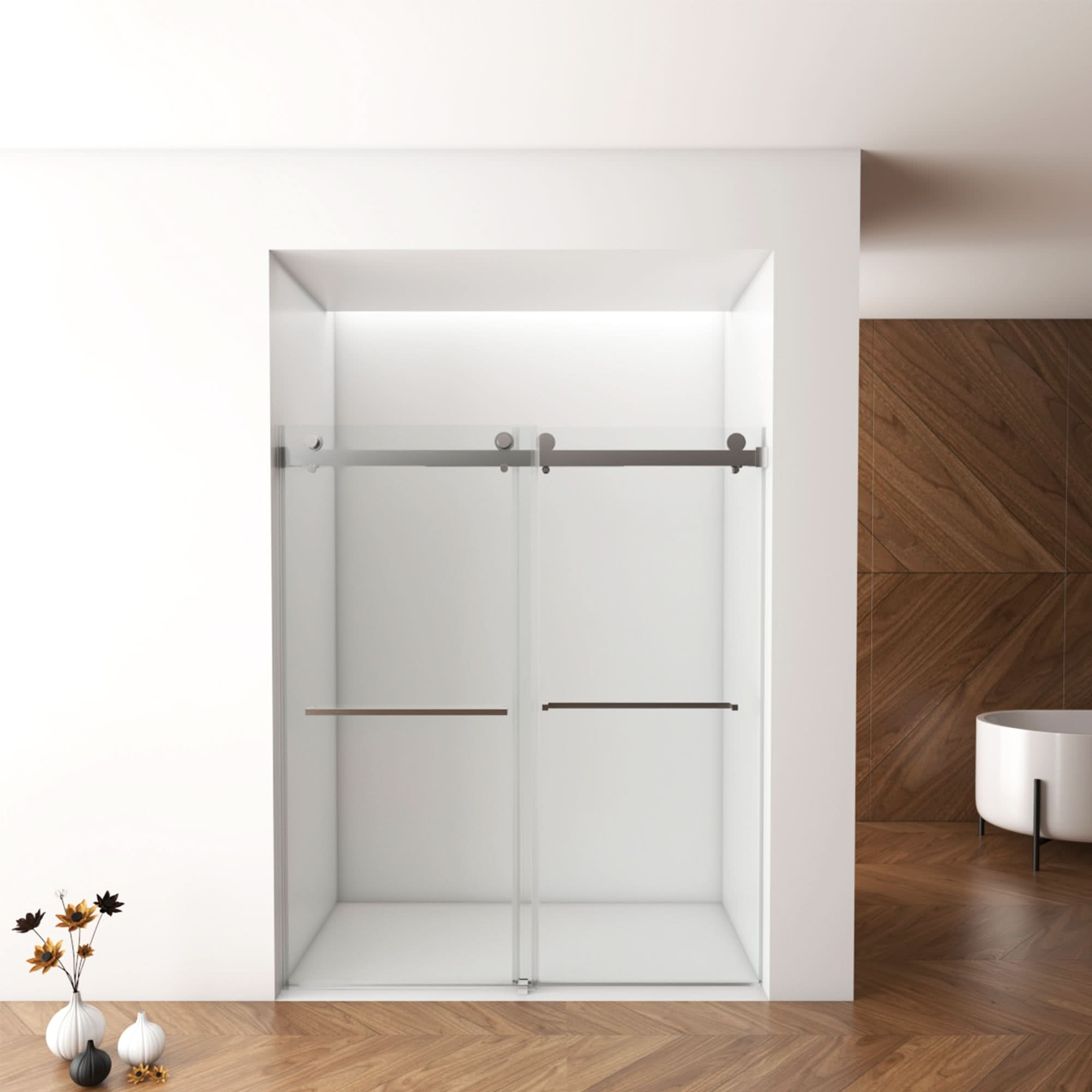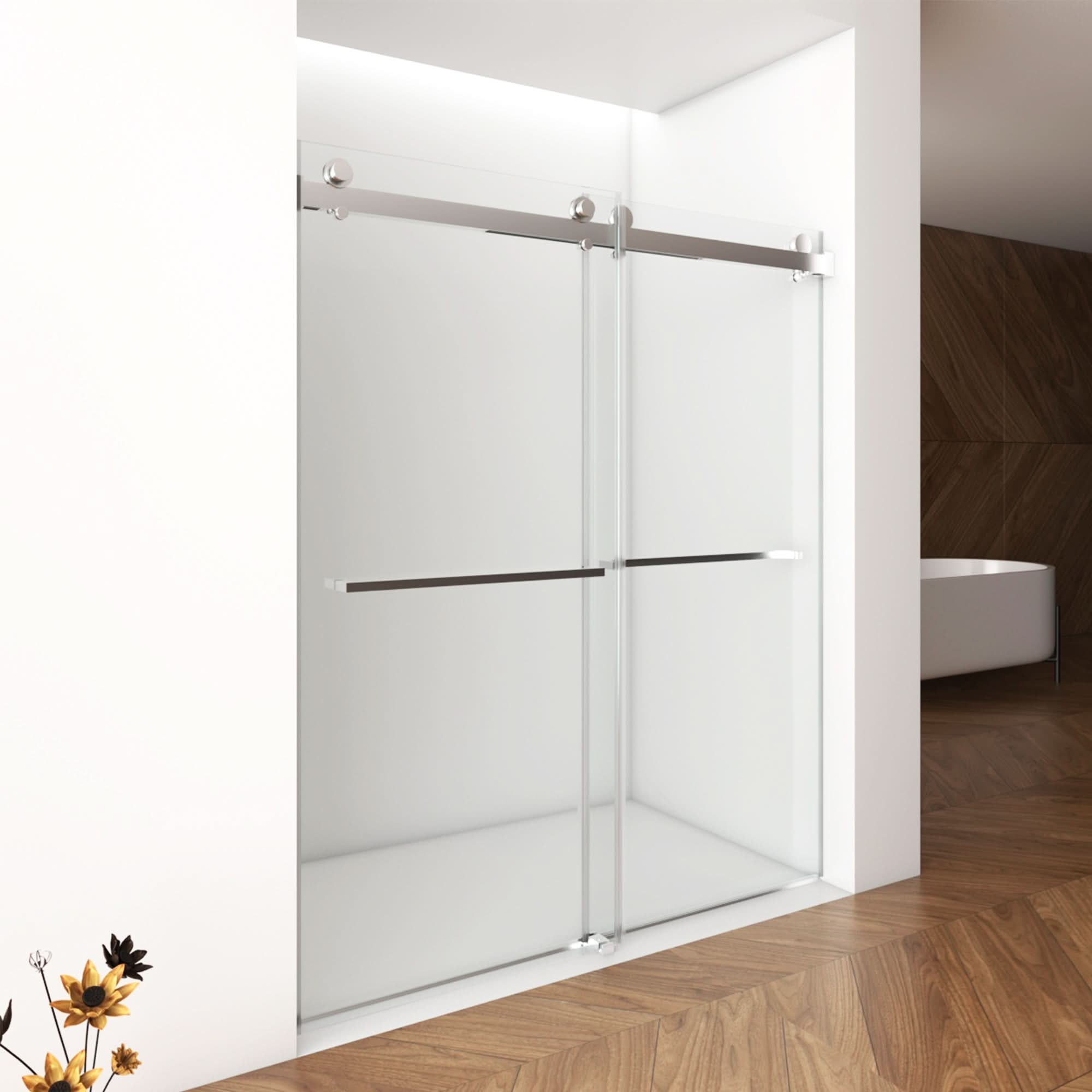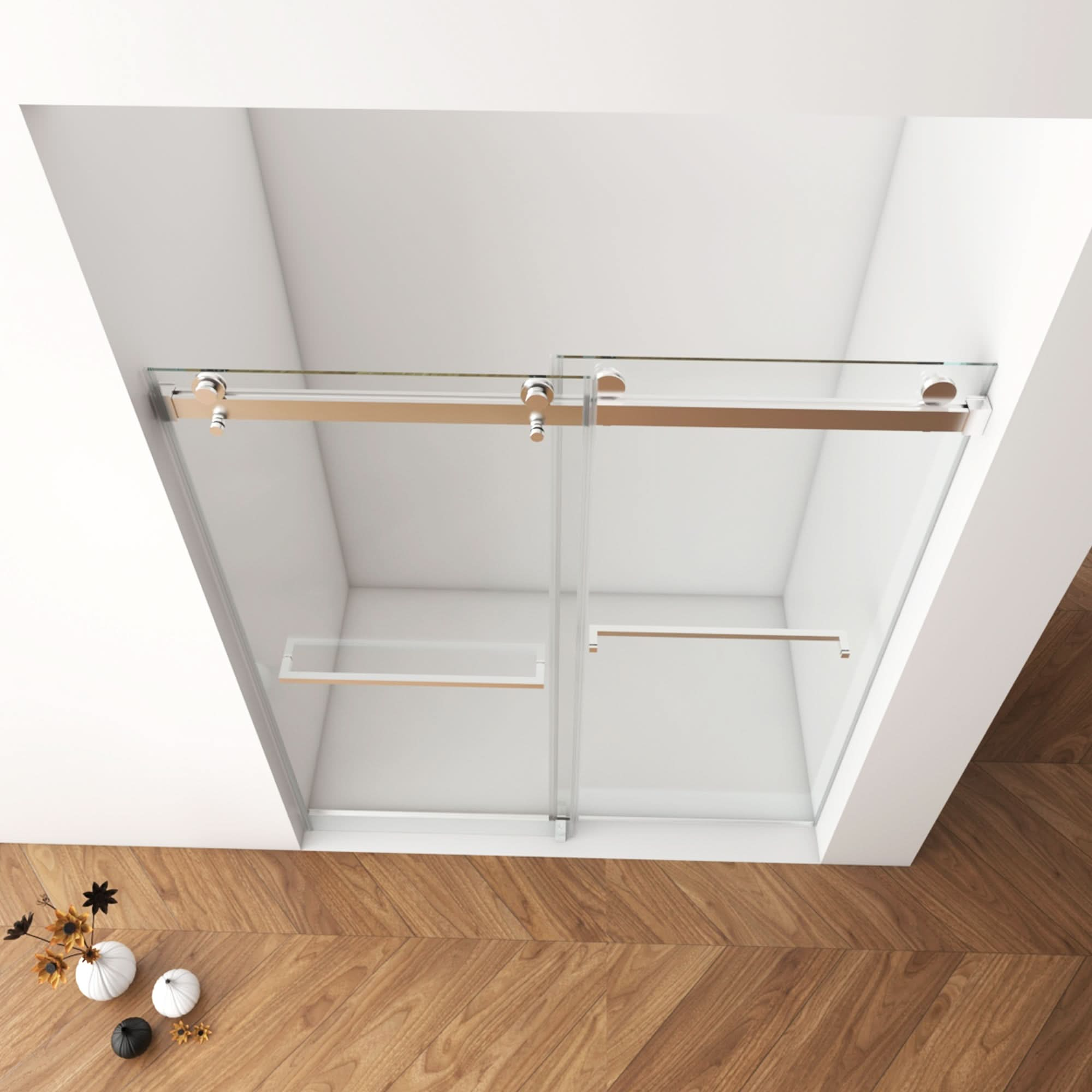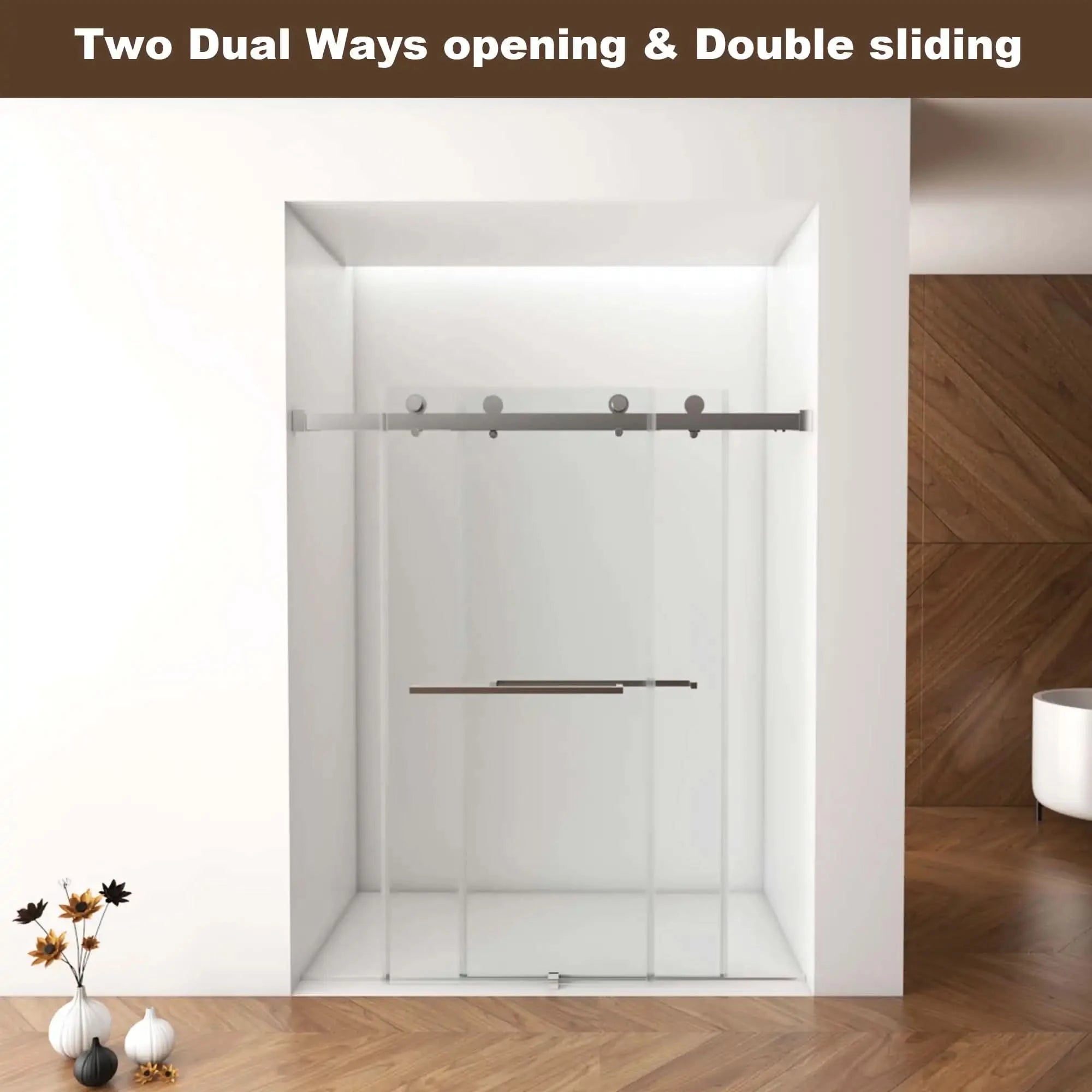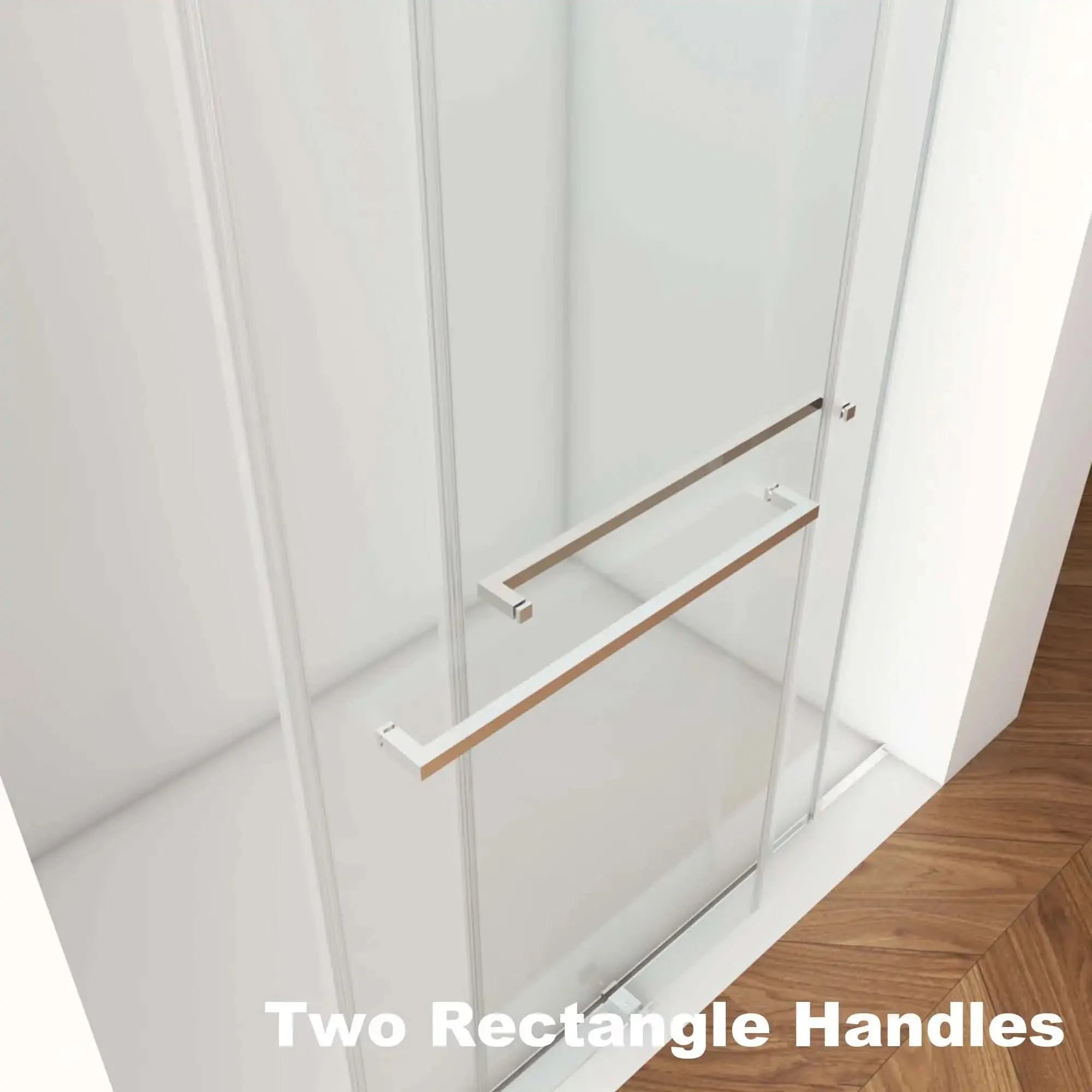When it comes to bathroom renovations, one of the most transformative changes you can make is installing a large walk-in shower door. These doors not only elevate the aesthetic appeal of your bathroom but also add significant value to your home. However, installing a large walk-in shower door involves several structural engineering considerations to ensure safety, durability, and functionality.
In this comprehensive guide, we will delve into the structural engineering aspects of large walk-in shower doors. We will cover everything from material selection to installation techniques and provide insights on how to incorporate specific product features from AceDecorBath.
Understanding the Basics

What is a Walk-In Shower Door?
A walk-in shower door is a glass door that provides easy access to a shower area without the need for a traditional bathtub. These doors are designed to be both stylish and functional, offering a seamless look that complements modern bathroom designs. Unlike traditional shower doors, walk-in shower doors usually do not have a threshold, allowing for easy entry and exit, which is especially beneficial for individuals with mobility issues.
Importance of Structural Engineering
Structural engineering plays a crucial role in the installation of large walk-in shower doors. It ensures that the door is properly supported, balanced, and secured, preventing potential accidents and maintaining the door's functionality over time. Without proper structural support, a large glass door can pose significant risks, including shattering under stress or sagging over time.
Material Selection

Types of Glass
Choosing the right type of glass is vital for the structural integrity of a walk-in shower door. Here are some common options:
-
Tempered Glass: Known for its strength and safety, tempered glass is the most popular choice for shower doors. It is treated with heat to increase its strength and, if broken, shatters into small, blunt pieces rather than sharp shards, reducing the risk of injury. For example, imagine a child accidentally slamming the door too hard. With tempered glass, the risk of severe injury is minimized.
-
Laminated Glass: This glass consists of two layers of glass with a plastic layer in between. It offers added strength and safety, as it holds together even when shattered. Laminated glass is particularly useful in homes with high traffic or in commercial settings where safety is paramount. Consider a busy household with pets that might bump into the door frequently; laminated glass provides an extra layer of security.
Frame Materials
The frame of the shower door must be durable and resistant to moisture. Common materials include:
-
Aluminum: Lightweight and corrosion-resistant, aluminum is a popular choice for shower door frames. It is also relatively easy to work with, making it a versatile option for custom designs. Aluminum frames can be powder-coated in various colors to match your bathroom decor.
-
Stainless Steel: Offers superior strength and corrosion resistance, ideal for high-end installations. Stainless steel frames provide a sleek, modern look and are especially suitable for bathrooms with contemporary designs. They are also highly resistant to rust and staining, which is essential in a wet environment.
Installation Considerations

Weight and Support
Large walk-in shower doors can be heavy, requiring proper support to prevent sagging or detachment. Here are key factors to consider:
-
Wall Reinforcement: Ensure the walls can support the weight of the door. This may involve adding studs or using anchors. If you're renovating an older home, it's crucial to check the wall structure. In some cases, additional support might be necessary to handle the weight of modern, heavier doors.
-
Hinge Placement: Proper hinge placement is crucial for balance and support. Heavy-duty hinges are recommended for large doors. Hinges should be installed at points that distribute the door's weight evenly to prevent stress on any single point.
Waterproofing
Proper waterproofing is essential to prevent water damage to your bathroom. This involves sealing the edges of the door and ensuring the shower area is designed to contain water effectively. Water leaks can lead to mold growth and structural damage over time. Using high-quality silicone sealant around the edges of the door can help prevent water from seeping into unwanted areas.
Incorporating AceDecorBath Products

Black Framed Walk-In Shower Door 4-Divided
This stylish door features four divided glass panels, providing a modern look with enhanced stability. The black frame adds a sleek touch, making it a perfect choice for contemporary bathrooms. The divided panels not only enhance the visual appeal but also add structural integrity. Learn more.
Black Framed Walk-In Shower Door 3-Divided
Similar to the 4-divided model, this door offers three divided panels for a slightly different aesthetic. The design ensures durability and stability while maintaining a modern appeal. This option is ideal for those looking to balance style with simplicity. Discover more.
Black Framed Walk-In Shower Door 16-Divided
For a unique and striking look, the 16-divided shower door is an excellent choice. Its multiple divisions provide added structural integrity and a distinctive visual appeal. This door is perfect for creating a focal point in your bathroom. Explore this product.
Structural Engineering Tips
Load Distribution
Ensuring even load distribution is key to preventing damage and maintaining the door's integrity. This involves careful planning of hinge placement and support structures. For instance, in a large family bathroom, the door will likely be used frequently and with varying force. Even load distribution prevents wear and tear on specific points, extending the door's lifespan.
Vibration and Impact Resistance
Large shower doors must be able to withstand vibrations and impacts. Using high-quality materials and proper installation techniques can mitigate these risks. In a household with active children or pets, ensuring the door can handle occasional impacts without compromising its integrity is crucial.
Regular Maintenance
Routine maintenance, such as checking for loose screws and inspecting seals, is essential to prolong the life of your walk-in shower door. Just like any other home feature, regular upkeep prevents minor issues from becoming major problems. A quick monthly check can save you from costly repairs down the line.
Practical Scenarios and Interactions
Everyday Usage
Imagine you have a busy household with kids rushing to get ready in the morning. The constant opening and closing of the shower door can take a toll on its structural integrity. By choosing high-quality materials and ensuring proper installation, you can prevent common issues like sagging or misalignment.
Renovation Projects
If you're renovating an older home, the existing walls and floor might not be perfectly level. This can complicate the installation of a large walk-in shower door. Professional installers will know how to adjust for these irregularities to ensure a secure and level installation.
Safety Concerns
For households with elderly members or individuals with mobility issues, ensuring the shower door is easy to open and close without requiring excessive force is vital. Additionally, the door should be installed to prevent tripping hazards, and the glass should be treated to be slip-resistant.
External Resources
For more detailed information on structural engineering principles, consider visiting the American Society of Civil Engineers, which offers comprehensive resources on the topic.
FAQ
What type of glass is best for walk-in shower doors?
Tempered glass is the best choice due to its strength and safety features. It is less likely to cause injury if broken, as it shatters into small, blunt pieces.
How do I ensure my shower door is properly supported?
Ensure the walls are reinforced and use heavy-duty hinges to support the weight of the door. Consulting with a structural engineer can provide additional peace of mind.
What are the benefits of laminated glass for shower doors?
Laminated glass offers added strength and safety, holding together even when shattered. This makes it an excellent choice for high-traffic bathrooms or commercial settings.
How often should I perform maintenance on my shower door?
Regular maintenance should be performed at least twice a year to check for any loose screws and ensure seals are intact. Regular cleaning can also help maintain the door's appearance and functionality.
Can I install a walk-in shower door myself?
While it is possible, professional installation is recommended to ensure safety and proper support. A professional can handle any unexpected challenges and ensure the door is installed correctly.
What should I do if my shower door starts sagging?
If your shower door starts sagging, it is important to address the issue immediately. This could be due to loose hinges or insufficient wall support. Tightening the hinges or adding additional support may resolve the problem. If the issue persists, consulting a professional is advisable.
Conclusion
Installing a large walk-in shower door can transform your bathroom into a luxurious and functional space. By considering structural engineering aspects such as material selection, weight support, and waterproofing, you can ensure a safe and durable installation. Incorporating high-quality products like those from AceDecorBath further enhances the functionality and aesthetic appeal of your shower area. For more information on selecting and installing the perfect walk-in shower door, explore our products.













